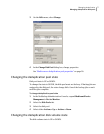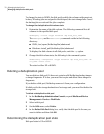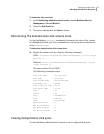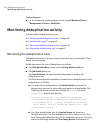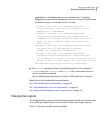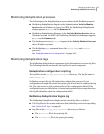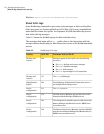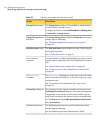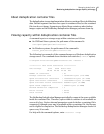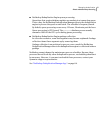
■ Alog filefor each connectionto theengine isstored in adirectory structure.
The following describes the pathname to a log file for a connection:
IP
address/application/TaskName/FirstDigitofSessionID/sessionID-current_time_in_seconds.log
For example, the following is an example of a crcontrol connection log
pathname on a UNIX system:
/storage_path/log/spoold/127.0.0.1/crcontrol/Control/2/2916742631-1257956402.log
Usually, theonly reason to examine these connectionlog files is if a Symantec
support representative asks you to.
NetBackup Deduplication Manager logs
The log files are in the /storage_path/log/spad directory.
■ spad.log
■ sched_GarbageCollection.log
■ sched_QueueProcess.log
■ SchedClass.log
Youcansetthe loglevelandretentionperiod intheChangeStorageServerdialog
box Properties tab.
See “Changing deduplication storage server properties” on page 66.
Deduplication database log
The deduplication database log file (postgresql.log) is in the
storage_path/databases/pddb directory.
You can configure log parameters. For more information, see the following:
http://www.postgresql.org/docs/current/static/runtime-config-logging.html
The default configuration for the PostgreSQL database does not add timestamps
to log entries on Windows systems. Therefore, Symantec recommends that you
edit the configuration file on Windows hosts so timestamps are added to the log
file.
To configure log file timestamps on Windows
1
Use a text edit to open the following file:
dbpath\databases\pddb\data\postgresql.conf
The database path may be the same as the configured storage path.
2
In the line that begins with log_line_prefix, change the value from %%t to
%t. (That is, remove one of the percent signs (%).)
Managing deduplication
Monitoring deduplication activity
84




